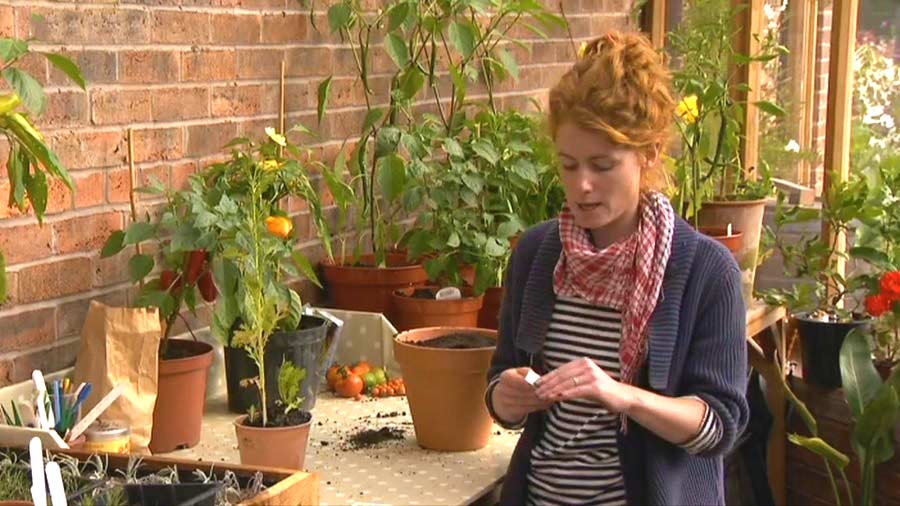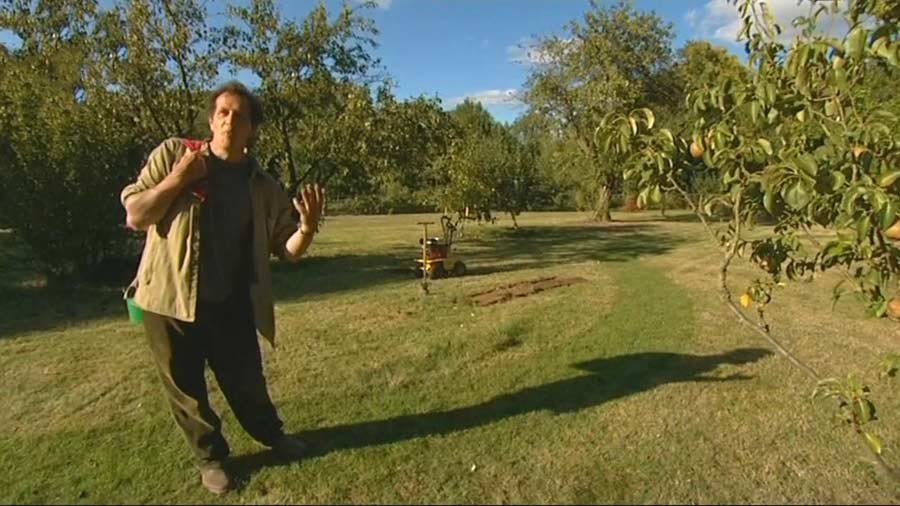The A to Z of TV Gardening – Letter S: Carol Kirkwood takes an alphabetical journey through the world of gardening, getting inspiration and advice from some of the BBC’s most popular garden presenters and programmes.
In this episode, she is exploring subjects that all begin with the letter S: Sunflowers, Sweet peas, Strawberry
The A to Z of TV Gardening – Letter S
Sweet pea
The sweet pea is a flowering plant in the genus Lathyrus in the family Fabaceae (legumes), native to Sicily, Cyprus, southern Italy and the Aegean Islands. It is an annual climbing plant, growing to a height of 1–2 metres, where suitable support is available. The leaves are pinnate with two leaflets and a terminal tendril, which twines around supporting plants and structures, helping the sweet pea to climb. In the wild plant the flowers are purple, 2–3.5 centimetres broad; they are larger and very variable in color in the many cultivars.
The annual species, L. odoratus, may be confused with the everlasting pea, L. latifolius, a perennial.
Sweet peas have been cultivated since the 17th century and a vast number of cultivars are commercially available. They are grown for their flower colour (usually in pastel shades of blue, pink, purple and white, including bi-colours), and for their intense unique fragrance. They are grown by gardeners for private enjoyment or for exhibition, and in the floristry trade. The large, pea-shaped seeds are sown in cold frames in Spring or Autumn. The seeds benefit from pre-soaking or chipping with a sharp blade. The plants are also available later in the season, as young plants or plugs.
They are grown up canes, with the new shoots being regularly pinched out to promote a bushy habit and higher flower yields. Plants typically reach heights of 1-2m, with the flowers appearing in midsummer and continuing for many weeks if regularly deadheaded.
Sunflowers
Helianthus is a genus of plants comprising about 70 species. Except for three species in South America, all Helianthus species are native to North America and Central America. The common names “sunflower” and “common sunflower” typically refer to the popular annual species Helianthus annuus, whose round flower heads in combination with the ligules look like the sun. This and other species, notably Jerusalem artichoke (H. tuberosus), are cultivated in temperate regions and some tropical regions as food crops for humans, cattle, and poultry, and as ornamental plants. The species H. annuus typically grows during the summer and into early fall, with the peak growth season being mid-summer.




